
HISTORICAL commercial alliances – and rivalries – within the global ute market means that now, in 2020, all the popular new utes currently on sale are all either near the end of their generational life, or midway through a generation.
In broad terms that means they are all near 10 years old, or five years old with none of the current popular utes being new-generation designs.
In simple terms the ‘oldies’ are the VW Amarok, Ford Ranger, Mazda BT-50, Holden Colorado and Isuzu D-Max, which arrived in Australia in that order in 2011/12. The mid-generation utes include the Mitsubishi Triton, Nissan Navara and Toyota Hilux, all of which arrived here in 2015.
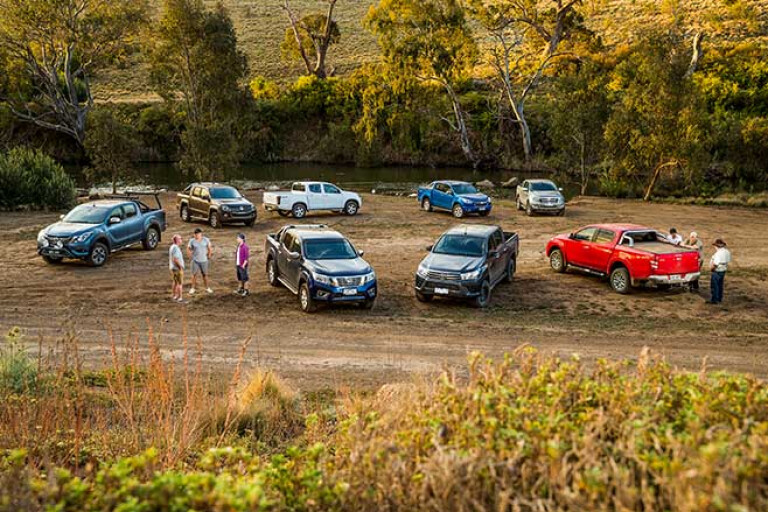
Of course, things haven’t remained completely static with those utes since their respective initial arrivals, although some have changed more than others.
Courtesy of a potent V6 diesel, the Amarok is the most changed although the 2016 re-engineering of both the Ranger and the Colorado also brought significant changes, as did the optional 2.0-litre 10-speed powertrain in Ranger in 2018. Even the mid-generational utes have seen evolution and changes in the last five years with Triton receiving a mid-life refresh last year.
All of this bodes well if you’re looking to buy a second-hand ute, as you can go back a good number of years to something that’s more affordable without having to settle for a previous generation design, which, by and large, lack the performance, safety, equipment, general amenity and, in some cases, the cabin size of the current generation utes.
HOW TO BUY A USED CAR
BUYING second-hand and making sure you get a good ute is not rocket science but does require patience, perseverance and, above all, a plan!
You might be thinking of either buying privately or buying through a dealer, as both have advantages and disadvantages, but it’s best to explore both. The wider the net you throw, the better chance of catching the best fish.
The main car-selling websites, which are the best place to starting looking for a second-hand ute, tend to combine private-sale and dealer second-hand cars anyway – unless you select another level of sorting – so that wider net is automatically thrown for you.
Dealer cars come with certainly of title and ownership, and generally with some warranty but will cost more and may not be necessarily be a good car, depending of course on the diligence of the dealer.
Private-sale cars are generally cheaper, but come with no warranty and you’ll need to thoroughly check that the person selling the car actually owns the car.
On the subject of throwing a wide net, those same websites allow you to select a ‘distance from you’ as one of the search criteria. No point in even considering utes that are too far away to inspect with reasonable convenience unless to get a better idea of average prices for the type of ute you’re looking for. If you live close to a state border, the ‘by state’ searches are also irrelevant and another reason to use ‘distance from me’.
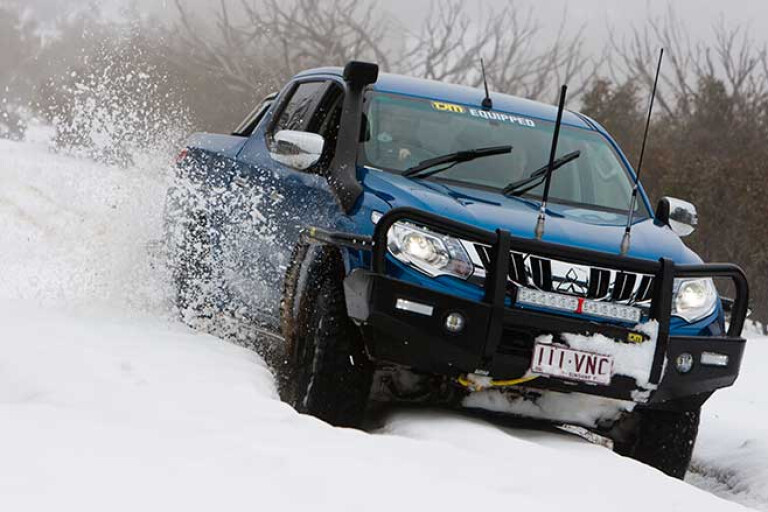
Once you have selected your preferred price range, the next key search criteria you need to use is ‘lowest mileage’, which is generally far more important than a ute’s age in years given all utes have a finite mechanical life – hopefully at least 400,000km – and the more of it that is used up when you buy it, the less that is left. The only qualifier on this is you may have a low-mileage older ute that’s been out in the weather all its life and its poor exterior condition overrides its mechanical youthfulness.
As ever, a documented service history is close to being essential (dealer car or not), while a documented ownership history is also important although not as vital as the service history.
A professional road-worthiness inspection by a mechanic is also very worthwhile if you’re not mechanically minded. Even having a friend along when inspecting a potential purchase is a good idea if, for no other reason, they may notice something you don’t.
Here’s a rundown of the current 4x4 utes and how they shape up as a second-hand buy, and presented according to new-sales popularity.
FORD RANGER
THE current generation Ranger arrived here in late 2011 but was revised heavily for the 2016 model year with improved engine response and refinement, electric power steering and changes to the way the chassis electronics work, which, along with the generous wheel travel, helps make the Ranger a top-tier performer off road.
The Ranger has a big roomy cabin that’s second-to-none in terms of combined front and rear legroom, and with the gutsy 3.2-litre five-cylinder diesel is about as good as it gets for heavy-duty low and tow work.
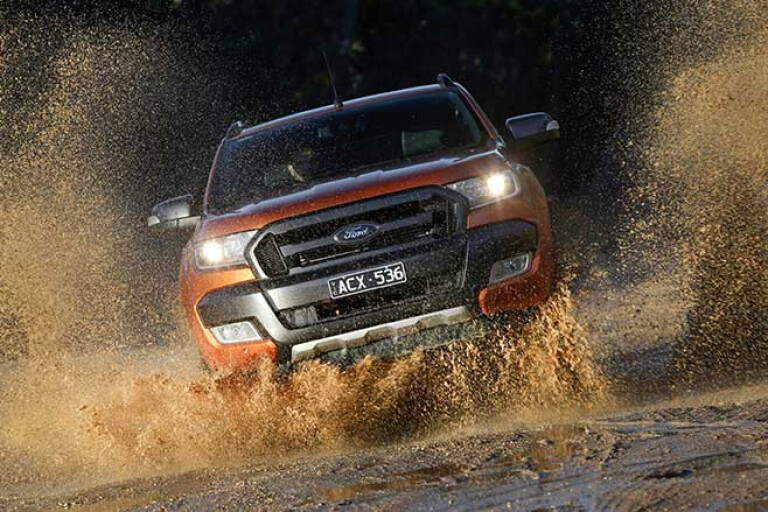
An optional powertrain, a 2.0-litre bi-turbo diesel with a 10-speed automatic, came in 2018 and while the small bi-turbo engine has the same towing capacity on paper as the 3.2 it doesn’t match the bigger engine when there’s serious work to be done, although it’s quiet and refined and peppy enough with moderate loads.
Unfortunately, it also has to work harder to do the same job as the 3.2, which makes the ‘big’ five-cylinder engine still the pick of the two. Such is the Ranger’s popularity it now outsells the Hilux in 4x4 models, which keeps second-hand prices strong. And an all-new Ranger is due in the next couple of years.
TOYOTA HILUX
THE Toyota Hilux is probably the most sought after of second-hand utes due to its solid reputation, and the high demand keeping prices high and the chances of getting a ‘bargain’ Hilux quite low.
The current generation Hilux 4x4 arrived here late in 2015 with three different engines and the usual cabin and drivetrain options.
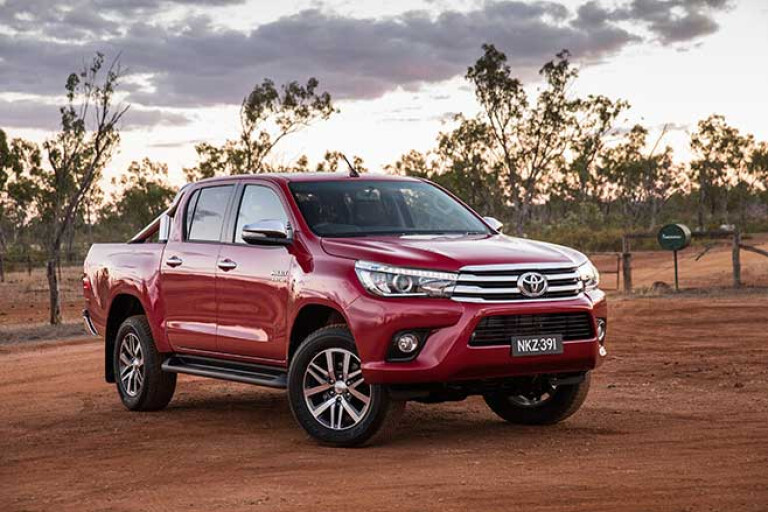
The Hilux is a ute that does most things well enough although the mainstream engine – the 2.8-litre diesel – is a little underwhelming in performance and over-geared with the automatic and works better as a manual. The 2.4-litre diesel in lower spec 4x4s does an admirable job but is no powerhouse.
If, by chance, you’re after a petrol ute then the Hilux is the only option in this class among the current generation utes. The 4.0-litre V6 in question is a rare find second-hand but is powerful, if relatively thirsty, and offers simplified maintenance compared to contemporary high-tech turbo diesels.
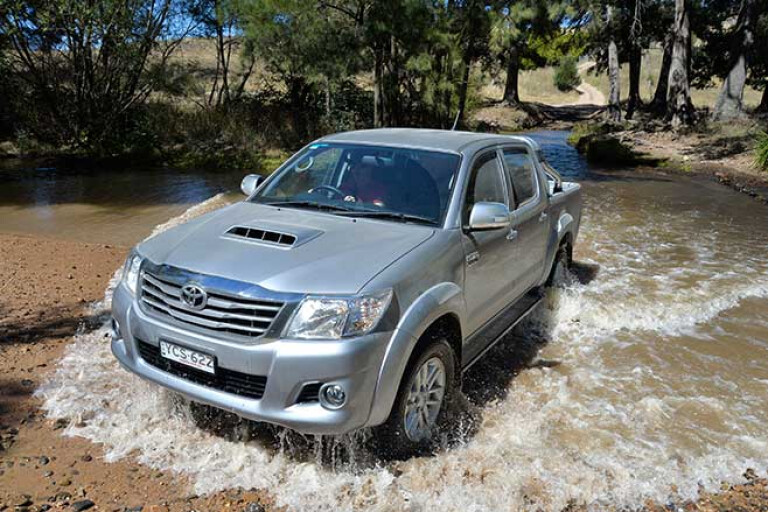
The Hilux is also physically smaller than big utes like the Ranger and the payload and towing capacities not as high in some cases. Like the Ranger, the Hilux is however a top-tier off-road performer due largely to its class-leading rear wheel travel.
MITSUBISHI TRITON
THE current generation Triton arrived here in 2015 and is distinguished from the other popular utes by being a bit smaller and not as good for carrying or towing heavy loads, but it’s also handier in confined places and the least expensive of the mainstream utes.
This is why its new sales rank only behind Hilux and Ranger. The low new price also translates to low second-hand prices, while strong new sales also means good supply on the used market. If you want a less costly ute than the Triton, then you’ll be looking at a Chinese, Indian or Korean offering.

Recent-model Tritons are very strong with add-on safety equipment, while more expensive variants also have the inherent primary safety bonus of full-time 4WD, a consistently underrated advantage that the Triton holds over the other popular utes, bar automatic Amaroks. And in the case of the Amarok, the full-time system is single range, whereas the Triton offers the combination of full-time 4x4 and dual range.
Unfortunately, while that helps the Triton in a touring role, the limited wheel travel means the Triton’s star fades off road and, along with the Navara and D-Max is a bottom tier off-road performer.
HOLDEN COLORADO
THE announcement that US carmaker General Motors is closing the Holden brand in Australia can only force down the value of second-hand Colorado utes.
Holden has guaranteed parts and service until 2025, but beyond that it will mean sourcing parts through independent channels. And unfortunately, while there are some common parts between the Isuzu D-Max and the Colorado most of the service-sensitive items such as the engines and gearboxes are different.
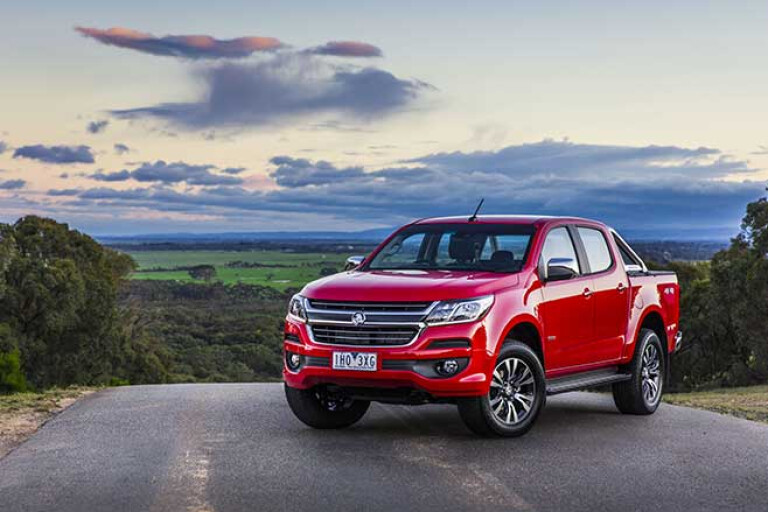
Outside of that the Colorado offers a biggish cabin and a hard-working engine that gets the job done. Excellent automatic gearbox too. It could well be the value buy in the used-ute market.
The current generation Colorado came out in mid-2012 and a top-to-bottom re-engineering in 2016 made it far better in terms of body and powertrain refinement, ride and handing, and steering courtesy of electric power steering.
The introduction of second-generation off-road specific electric traction control in that year also moved the Colorado from a bottom-tier off-road performer to a mid-tier off-road performer. So, if you’re after a Colorado, then you definitely want a 2016 or later model!
NISSAN NAVARA
THE current Nissan Navara, or D23, was another 2015 release and is distinguished in the broader ute market as most dual-cab variants having coil springs at the rear, and not traditional leaf springs.
It’s fair to say that this generation Navara has been a disappointment for Nissan, sales-wise, failing to gain the market penetration of its predecessor, the D40. Despite claiming a 3500kg tow rating to match the bigger utes in the class such as Ranger and Colorado, the Navara proved none too good at either towing or carrying heavy loads, although this was improved for the 2017 model and again in 2018.
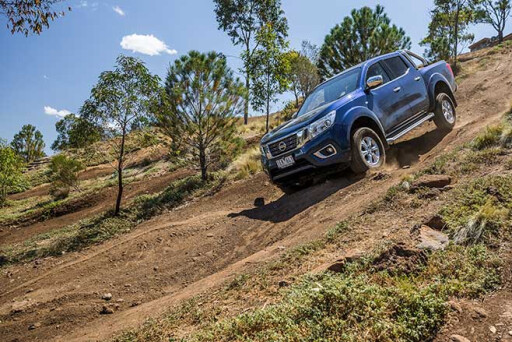
You can get traditional leaf springs at the rear of a Navara D23, but only with the less powerful single-turbo engine and not with the more powerful bi-turbo engine that is the default engine across the broader range.
The Navara’s relatively poor ground clearance and limited wheel travel also means it’s a bottom-tier off-road performer, despite coming with a rear locker as standard.
If you want a more general-duties ute and not a heavy-duty workhorse or off-road weapon, the Navara still offers decent performance and good levels of equipment, so can be good value. And if you want a dual-cab 4x4 with a factory sunroof, or an opening back window, then it’s the only choice!
ISUZU D-MAX
THE Isuzu D-Max has been the quiet achiever of the ute market, rising from near obscurity upon release in 2012 (at the same time as the Colorado) to a significant force in the market today.
Not much changed in the first five years of this generation’s life but 2017 brought a revised engine, new gearboxes and stronger all-round performance. The engine needed upgrading for Euro 6 emissions standards, which meant, among other things, the fitting of a diesel particulate filter.
The D-Max is still a modest performer but will get the job done even when towing heavy loads. Call it an honest workhorse, every day, all day. Like the Colorado, whose bodyshell and ladder frame it shares, the cabin is mid-size, so bigger than Navara or Triton, but not as roomy as a Ranger, BT-50 or Amarok.
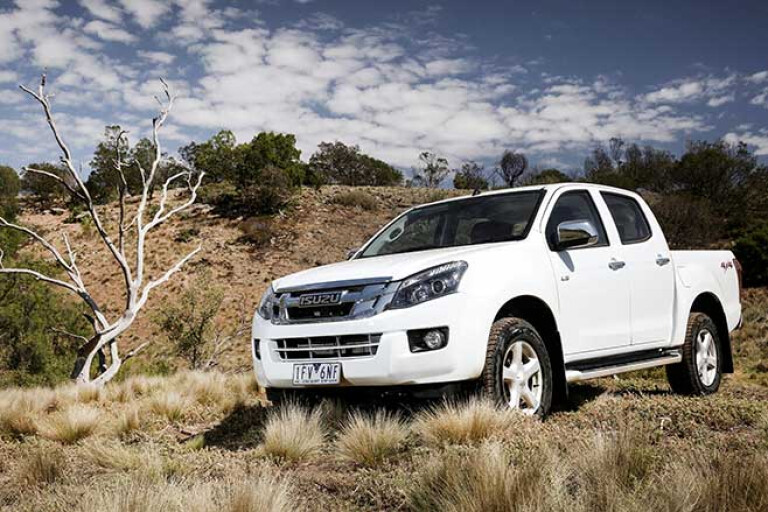
The D-Max however, isn’t anything special off road and while better than Triton or Navara, it still falls in the bottom-tier utes in terms of off-road performance.
With its excellent reputation for reliability and low service costs the D-Max is a popular second-hand buy and one that keeps its second-hand value well. As with buying a second-hand Hilux, finding a ‘bargain’ D-Max won’t be easy.
An all-new D-Max is due in 2020 but the timing is uncertain given the CV-19 disruption. When it does arrive, it will be the first of the next-generation utes to do so.
MAZDA BT-50
WHEN this generation Mazda BT-50 arrived in late 2011, it was a rebadged twin of the then-new Ford Ranger. There were a couple of minor technical changes – steering-rack ratio and suspension damper calibration – but otherwise the two were mechanically identical.
From 2016 on however, with Mazda not adopting the mechanical enhancements made to the Ranger in that year, the BT-50 fell behind the Ranger in a number of ways, notably engine refinement and flexibility, and off-road where the BT-50 is a mid-tier performer, although a good one at that.
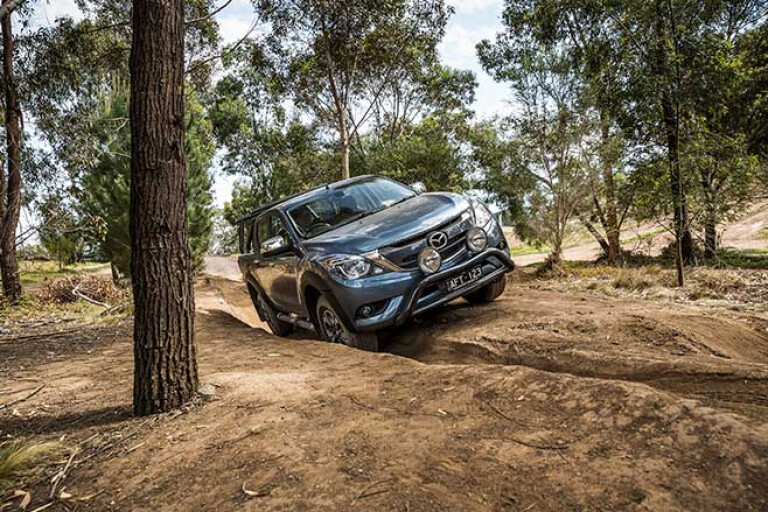
On the other side of the ledger, you can make an argument for the BT-50 staying with the proven, long-term reliability of hydraulic power steering and not adopting electric power steering, as did the Ranger.
Despite the similarities the BT-50 has only enjoyed a faction of the Ranger’s sales, so is not as common on the used market. But if you can find one, it offers the same basic attributes of the Ranger, namely a big cabin and excellent load and tow performance thanks largely to the big and ‘grunty’ 3.2-litre five-cylinder diesel.
A new generation BT-50, sharing a platform with the upcoming Isuzu D-Max, is expected later this year.
VOLKSWAGEN AMAROK
VOLKSWAGEN’S Amarok first appeared in Australia in early 2011, initially with a four-cylinder bi-turbo diesel. This was joined by a 3.0-litre V6 diesel in late 2016. Even with its four-cylinder engine, Amarok set the benchmark for utes in many ways and the V6 has pushed that superiority out to another level.
In terms of performance, heavy-duty towing power, ride and handling, the safety of full-time 4WD, fitting a full-size pallet between the wheel arches and ease of driving, there is none better.
Until recently, the V6 was only mated to a single-range full-time 4x4 auto system but is now available as a part-time, dual-range 4x4 manual, however don’t expect to see many of these pop up on the second-hard market for a while yet.
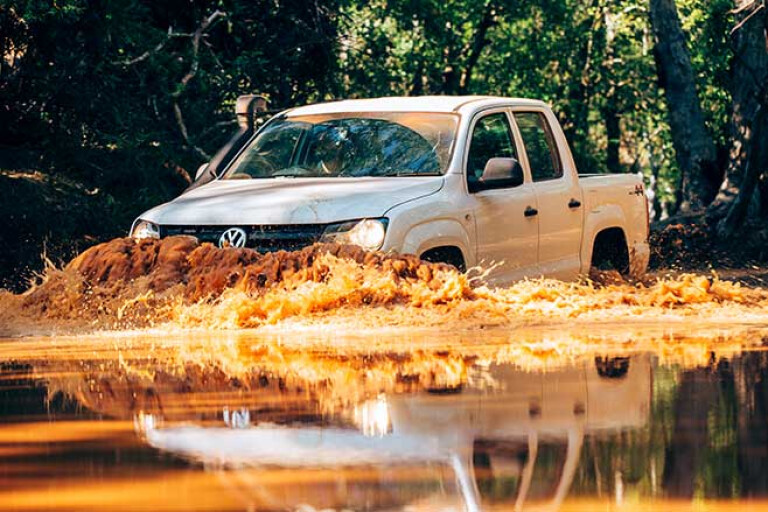
Still, if you think the lack of low-range is a handicap off road for the Amarok automatic, then you would be wrong as it’s a genuine top-tier off-road performer along with Ranger and Hilux and better than most utes with low range.
On the negative side of the ledger, the Amarok has no rear cabin airbags, in any model, while the lack of VW dealerships in regional and rural areas and the Amarok not being the favourite of independent country mechanics are other drawbacks.
An all-new Amarok isn’t far away and it appears it will be based on a Ford platform, which means the current Amarok could be one of a kind.

COMMENTS